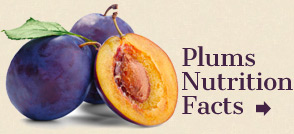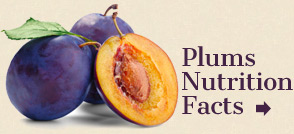Pest and Disease Control
For brown rot, remove old fruit from the tree before growth starts in the spring, spray once or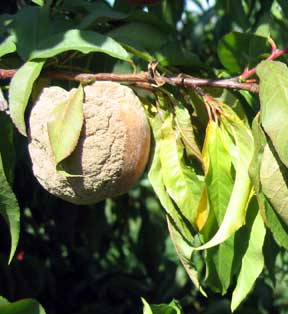 Brown rot sporulation (on peach) twice during bloom with an effective fungicide (Captan or Immunox or others labeled for brown rot) and several times as the fruit starts to color. One spray during bloom is probably sufficient if the weather is relatively dry.
Brown rot sporulation (on peach) twice during bloom with an effective fungicide (Captan or Immunox or others labeled for brown rot) and several times as the fruit starts to color. One spray during bloom is probably sufficient if the weather is relatively dry.
Black knot is a common and sometimes severe fungal disease of plum trees in the Michigan and similar climates. Black knot is an occasional problem on cherries, peaches, and apricots. The disease is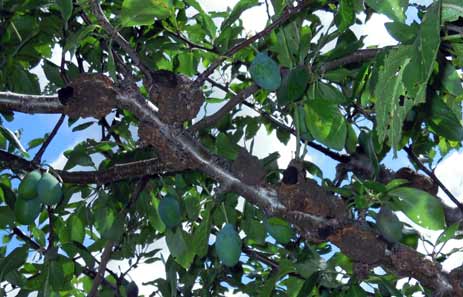 Black know symptoms on plum favored by moderate wet conditions during active shoot growth. Limbs affected by black knot become progressively weaker and less productive.
Black know symptoms on plum favored by moderate wet conditions during active shoot growth. Limbs affected by black knot become progressively weaker and less productive.
The fungus overwinters in infected wood and the black knots that develop on them. on twigs and branches or in the infected wood immediately surrounding them. In the spring, beginning when the plum growth starts, spores in the black knots are spread by wind and rain. Under continued wet conditions infection will take place. Only actively growing plum shoots are susceptible to new infections.Infected limbs will eventually develop knots, beginning in a few months.
To control black knot, careful pruning to remove knots is critical, at least twice per season and whenever knots are noticed. Cut knots and at least 5 or 6 inches of symptomless limb next to each knot. Remove knots from orchard and bury or burn. Check orchard boundaries for wild plums and cherries for knots and remove knots or entire trees. Several treatments with fungicides specific for black knot may be needed during active limb growth. Once black knot is established in planting, aggressive pruning and fungicide applications are needed over several years to restore it to a disease-free status.
Plum curculio, tarnished plant bug, codling moth, oriental fruit moth, and oblique banded leaf roller are the most common insect pests of plum in Michigan and adjoining states. Use an insecticide labeled for plums or tree fruit starting shortly after petal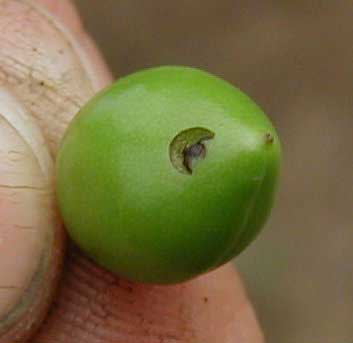 Plum curculio egg laying scars fall and at 1 ½ week intervals.
Plum curculio egg laying scars fall and at 1 ½ week intervals. 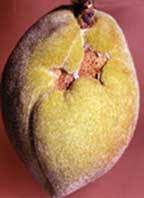 Tarnished plant bug damage (on peach)The first month after bloom tends to be the more important control window for plum curculio and tarnished plant bug.
Tarnished plant bug damage (on peach)The first month after bloom tends to be the more important control window for plum curculio and tarnished plant bug.
There are combination disease and insect control spray materials available. Read and follow the label carefully.



